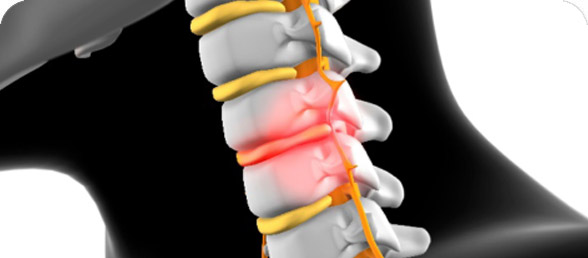Studies suggest that an average sneeze or cough can contain 100,000 contagious viral particles delivered into the air at speeds of up to 60-100 miles an hour!

Last week I wrote about concern over the flu epidemic that has taken place in the southern hemisphere. As we move into winter and I hear patients sneezing in clinic I worry and this is why. Before I move onto this, as usual, I start with my weekly venting!
In the days of Trumpism it is indeed a strange world we live in these days. We now have Boris Johnson as our leader. This is the same person who once said: “My chances of being PM are about as good as the chances of finding Elvis on Mars, or my being reincarnated as an olive.” The turbulent crazy world of politics and BREXIT is paralleled by the extremes of climate change. Almost 400 all-time high temperatures were set in the northern hemisphere over the summer, according to an analysis of temperature records. Obviously concerns over climate change are understandably highest amongst young people but they themselves are also highly driven by fashion, herein lies the paradox. Textile production is the world’s second most polluting industry after the oil industry. The average teenager in the UK might possess up to six pairs of trainers at any one point but will typically discard three pairs each year to landfill, such is the speed of fashion. An average pair of trainers has a carbon dioxide equivalent of 13.6kg but 39% of teenagers state they would get teased if they weren’t wearing the right brand! So, it is quite reassuring to write something on a more mundane issue in this fast-changing world.
This week I am looking at the key vectors in cold and the flu virus transmission. This enables us all to be more aware how infection is disseminated and you will be surprised by how coughing and sneezing spread infection. What does the latest research demonstrate?
How Colds and Flu Spread
One latest research study published in Proceedings of the National Academy of Sciences even suggests that even just breathing can cause transmission. One of the lead researchers’ comments; “People with flu generate infectious aerosols (tiny droplets that stay suspended in the air for a long time) even when they are not coughing, and especially during the first days of illness. So, when someone is coming down with influenza, they should go home and not remain in the workplace and infect others.” Professor Milton who led the study and his research team captured and characterised influenza virus in exhaled breath from 142 confirmed cases of people with influenza during natural breathing, prompted speech, spontaneous coughing, and sneezing.
Which leads us on to our next point. The Massachusetts Institute of Technology in 2014 looked at how far coughs and sneezes travel, and the results were surprising. Coughing spreads droplets as far as six metres and sneezing as much as eight metres! Some studies suggest that an average sneeze or cough can contain 100,000 contagious viral particles and delivered this load at speeds up to 60-100 miles per hour. Uck!

Sneezing can cause an aerosol that Travels 8 metres
One of the key issues with any respiratory tract infection is that it gives us the compulsive reflex to cough or sneeze. Coughing helps clear the airways of mucus and remove excess fluids from the lungs, especially when normal mechanisms of clearance are overloaded or impaired. During a cough or sneeze, droplets of airway secretions become airborne having been expelled from the mouth in a high-velocity sneeze or what researchers charmingly call a “multiphase turbulent buoyant cloud”!
The aerosol droplets generated during coughing or sneezing span a broad size range, from mere nanometres (this is a billionth of a metre) to hundreds of micrometres (one millionth of a metre). The dispersion of these droplets in the environment depends to a large extent on just how big they are. Most of the larger, heavier drops fall quickly to the floor under the influence of gravity.
The smaller and lighter particles (those that are five microns or less across) are less affected by gravity and can stay airborne almost indefinitely as they are caught up in and dispersed by the room’s airflow. Droplets less than 50 micrometres in size can frequently remain airborne long enough to reach ceiling ventilation units. Once breathed in, the droplets settle onto cells at the back of our throats, where the virus attempts to enter these cells and begin replicating. This may or may not cause an infection. The body’s natural defences are designed to eliminate infections, and whether someone will fall ill depends on how much virus is breathed in and whether the person’s immune system has encountered that virus previously.
What Happens when infected Mucous from a Sneeze or Cough Lands on a Surface?
Of course, many of these tiny droplets may also land on all the various surfaces within our given environment. These surfaces range from soft porous surfaces such as duvets or sheets to hard resistant surfaces such as stainless steel or granite worktops. So, the real question is how long these viruses remain viable before we ourselves unwittingly touch a surface. How long can they survive? The truth is that cold and flu viruses’ rapidly decrease in viability outside our body thanks to three main factors: their enveloped structure (or outer membrane), environmental conditions and how much our mucus surrounds it after a sneeze!
An enveloped virus that has an outer membrane (like influenza A and most cold-causing viruses) is by nature primed for destruction and they are subsequently typically neutralised within 24 hours. Temperature, ultraviolet radiation from sunlight, pH changes and salt can play a role in weakening a viral envelope. One the key factors is also moisture. Mucus from a sneeze can protect a virus from the damaging influences of a dry environment, making the virus contagious for longer. One small grisly bonus is the more mucus someone sneezes, the shorter distance it will travel because of its increased weight and size. Viruses obviously tend to be more stable in environments from which they’re known to reproduce. They thrive in the warm moist environments that persist in your nostrils, in your throat or bronchial tree. But when they’re exposed to a different material or to a non-moist environment, they break down. There are exceptions. A non-enveloped virus — like the norovirus, an intestinal disease which causes winter vomiting— can be viable on surfaces for weeks.
How Long does the Virus Remain Viable after Sneezing?
There are a handful of studies that have looked at how long flu viruses retain their infectiousness on common surfaces, but conclusions appear to be a little inconsistent. In general, most cold viruses are no longer dangerous after 24 hours. Their ability to infect dissipates faster on porous materials like facial tissue or cotton sheets because moisture is rapidly leached out of the virus particle causing its structure to collapse. Non-porous surfaces serve as more ideal for most viruses. A 1982 study found influenza A remained contagious up to 48 hours on hard plastic or stainless steel. Another study performed in 2011 at Public Health England (PHE) appeared to contradict this. This study took two strains of influenza A and analysed how long they remained infectious on a variety of common surfaces. After nine hours, viable viruses were no longer found on most non-porous metal and plastic surfaces, such as aluminium and computer keyboards. On porous items, like soft toys, clothes and wooden surfaces, viable viruses disappeared after four only hours.
The best surface for killing viruses is surprisingly our skin. In the cases of both flu and cold-causing viruses, infectious particles on our skin last no longer than 20 minutes. Between its pH and its porous nature, our body’s natural barrier does a great job at killing viruses. Our hands are also a common vector of transmission even if there is only a 20-minute window. We as individuals typically touch our faces an average of 15 times per hour. We may subsequently contact our mouths or rub our eyes, each being entry point for a virus.
Because flu viruses don’t often last beyond nine hours (even on a hard surface) research suggests public spaces like classrooms, offices and kitchens that are not populated at night will usually be free of contagious flu viruses the next morning. But for those who want to be more proactive sanitising surfaces periodically with wipes or other chemicals is recommended. Chlorine, hydrogen peroxide, soaps, detergents or alcohol-based gels all disrupt the capsules of viruses which means they are no longer capable of being infectious. Obviously using tissues to cover your mouth and nose when coughing or sneezing, throwing said tissue.






